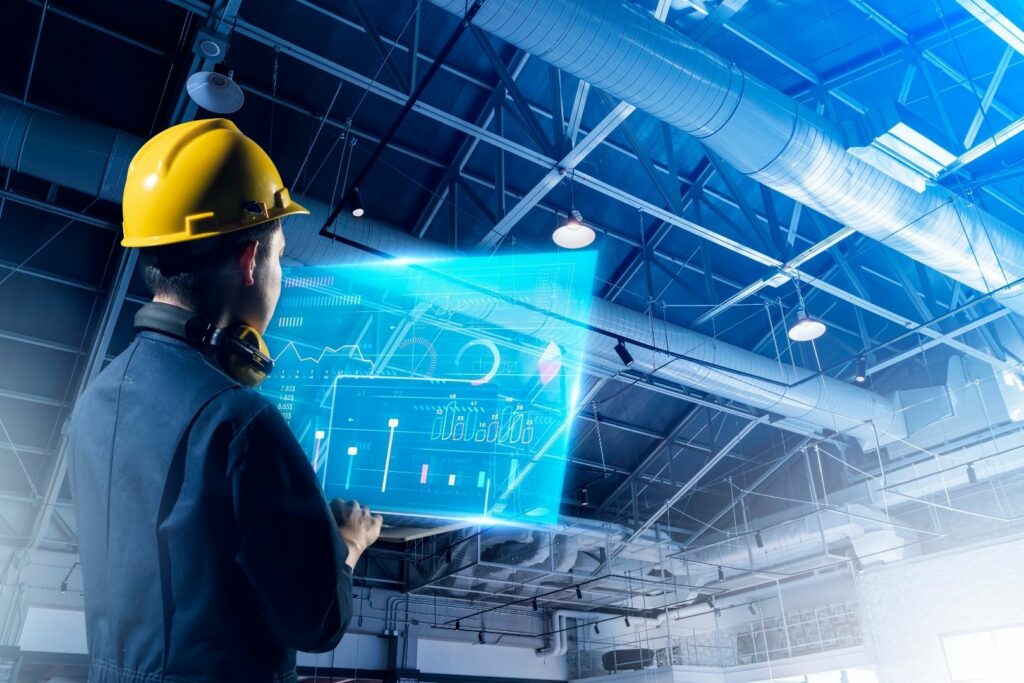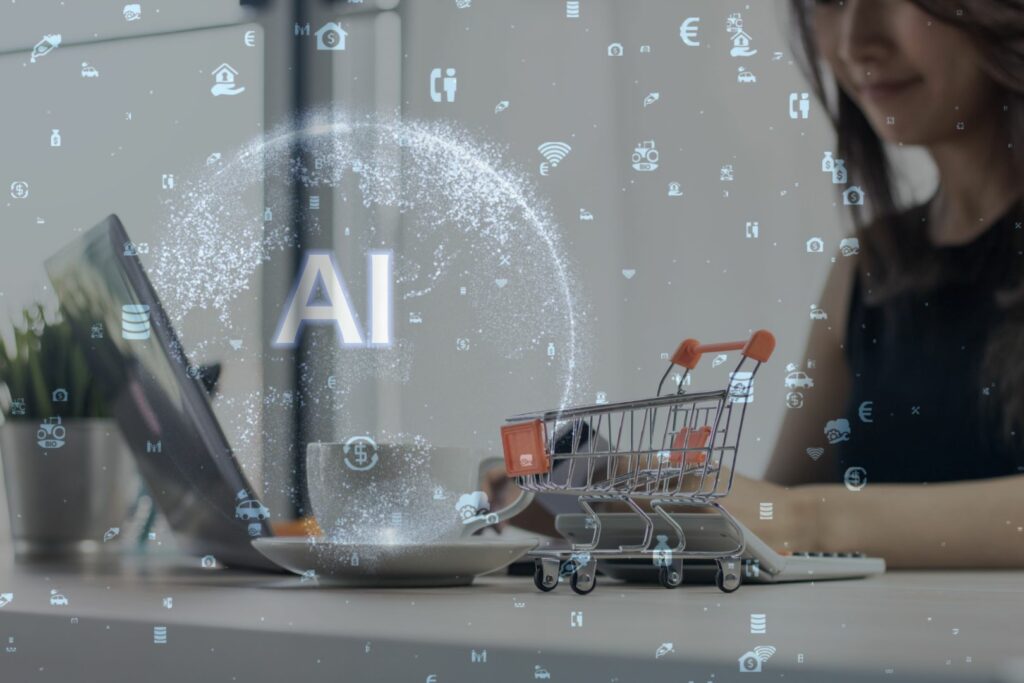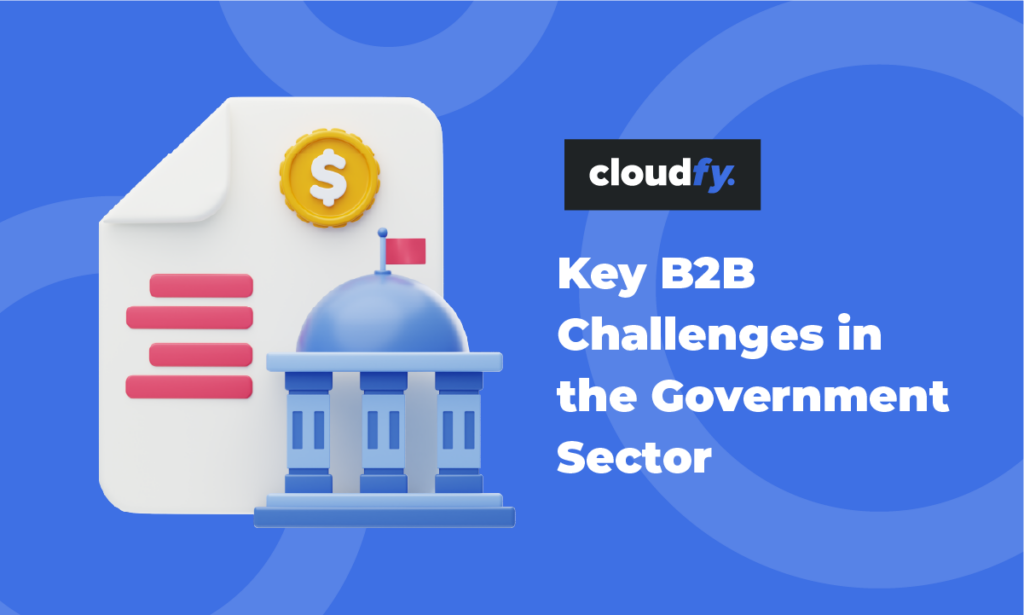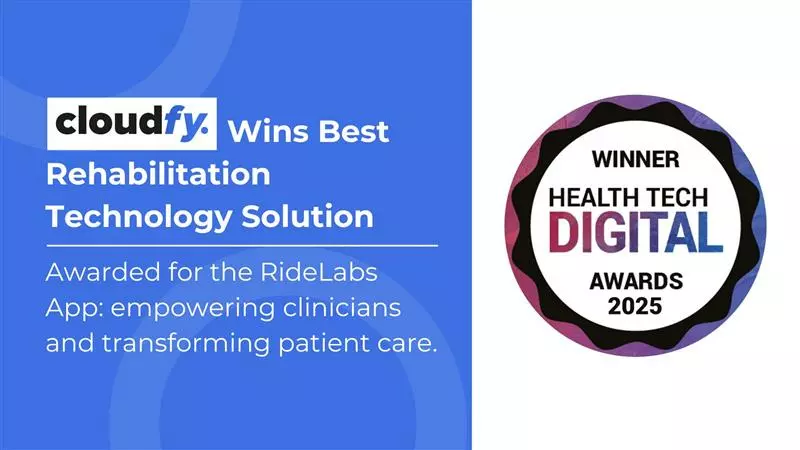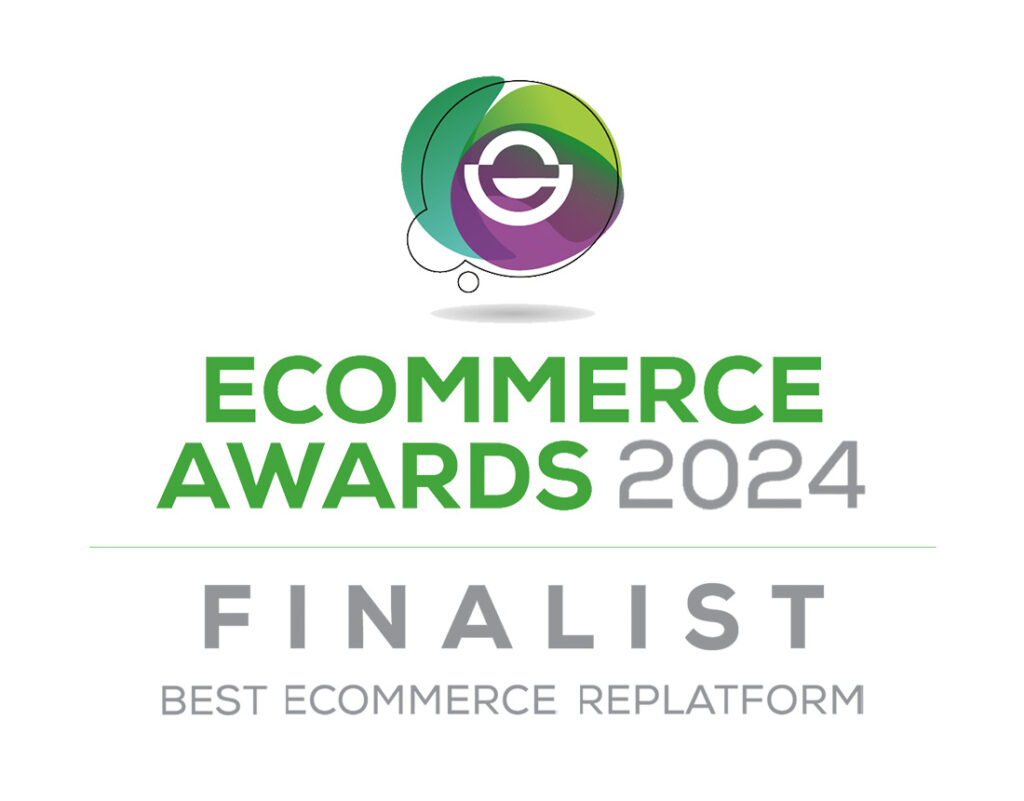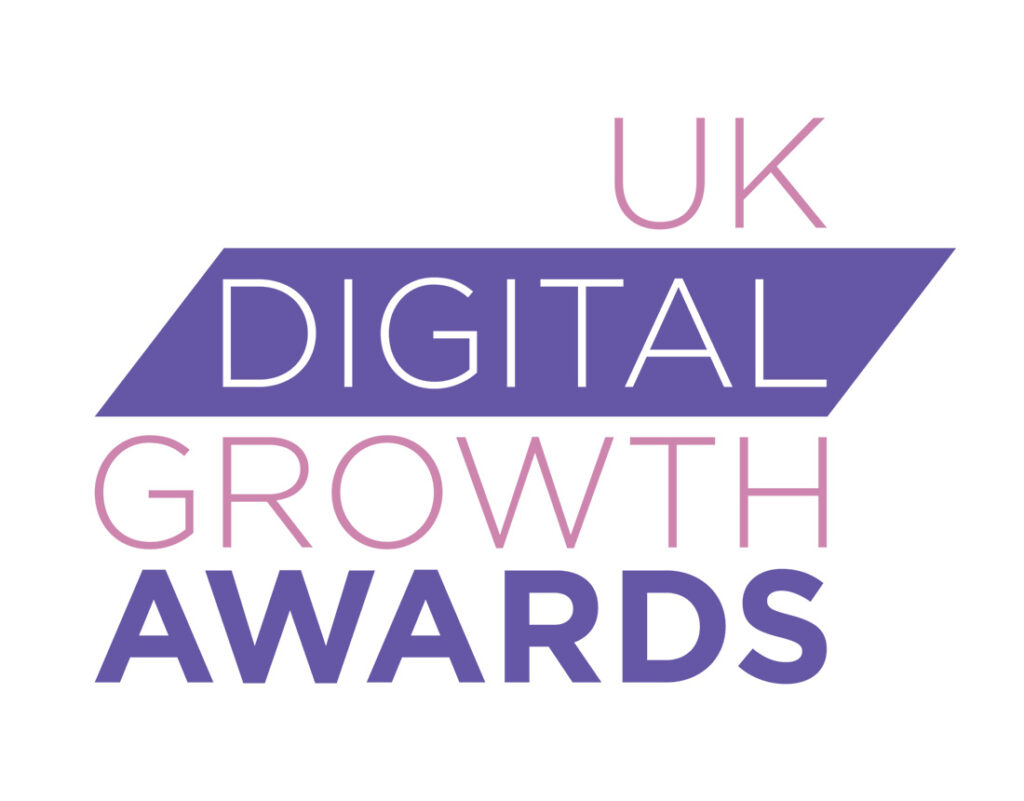The Industrial Internet of Things (IIoT) is transforming industries throughout the world by linking devices, equipment, and systems in a data exchange network. While the IIoT has traditionally been connected with the manufacturing and industrial sectors, its effect on B2B ecommerce operations is growing. Businesses may uncover new possibilities, optimize operations, and provide extraordinary customer experiences by embracing the potential of IIoT.
The economic-value potential of the IoT is particularly prevalent in factory settings where it’s expected to account for the largest amount of potential value, estimated to be around 26% by 2030, worth around US$3.3trillion.
Integration as part of the Industrial Internet of Things (IIoT) is altering the face of B2B ecommerce, and organizations that are well prepared will gain a clear competitive advantage. In this blog, we will explore five exciting ways your B2B ecommerce operation can benefit from the Industrial Internet of Things
Table of Contents
IoT is pervasive
You have probably interacted with one or more IoT devices during the last 24 hours. You might have used a WiFi connected home appliance, a wearable device, a home assistant, or you might have tracked an online purchase.
The idea of an Internet of Things was first suggested in 1999 to describe a connected network of objects that can share data and interact. Devices such as smart phones have enabled a wide range of connected functions, including online research and buying. It’s predicted that there will be over 27 billion IoT connections by 2025.
The widespread availability of 5G, for example, will enable a new generation of IoT applications including remote monitoring, visual inspections and autonomously operating plant, machinery and vehicles.
How the IoT can affect B2B ecommerce
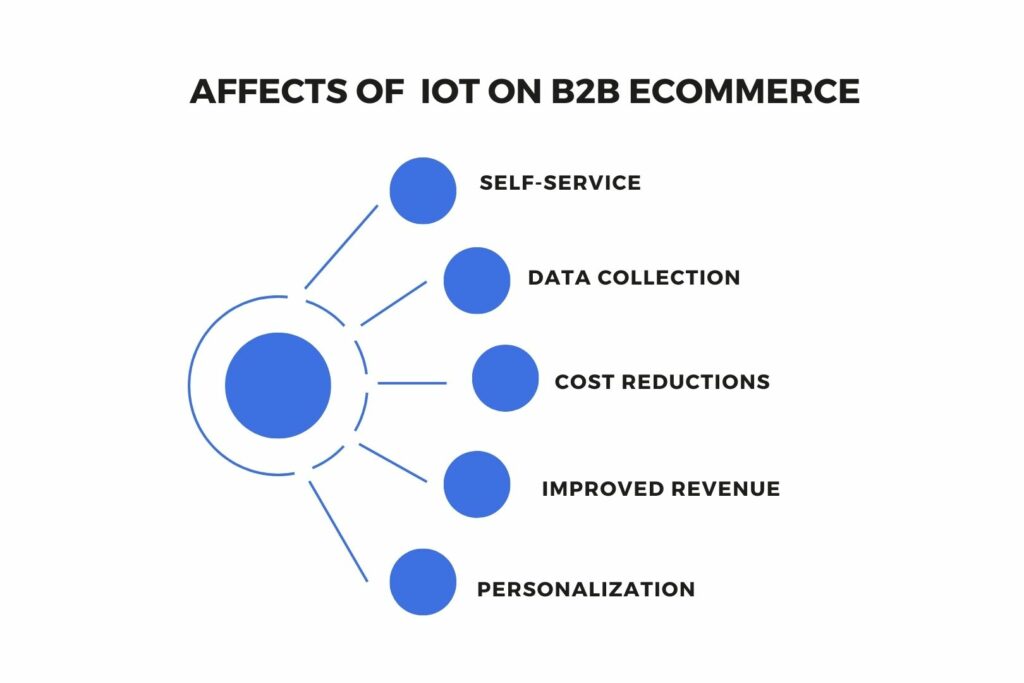
Self-service
Up to 80% of B2B customers prefer to use digital self-service options because they are easy to access at any convenient time and can be used in a safe work- or home-based environment. IoT devices, such as voice assistants, smart watches, or mobile apps allow B2B buyers to make purchases as easily as they buy personal items online.
Data collection
IoT devices enable data collection at multiple touchpoints to provide real-time insights. This might include trends and patterns in customer behavior, stock levels, or maintenance information for your production line, for example. Using sensors in your equipment, you can also monitor use and anticipate demand for replacement parts and consumable items.
Cost reductions
Radio frequency identification (RFID) tags can store information on your stock movements and where each unit is in the supply chain. You can automatically highlight delays and bottlenecks to improve your efficiency and increase customer satisfaction. You can even optimize delivery routes to reduce fuel costs.
Reliable and continuous data sources provide a real-time picture of movements between your warehouse and third-party logistics provider (3PL), for example. You can anticipate and resolve potential operational issues quickly to minimize costly delays. Temperature sensors could make sure variations are highlighted to maintain perishable products in good condition and avoid spoilage.
Improved revenue
Subscription services are growing in popularity because of their ease and convenience. The IoT can take this a step further by anticipating when your customers might need to replace consumable items like printer cartridges, for example. Reminders can be sent or the products can be despatched automatically to make sure their supplies don’t run out, maintaining an ongoing revenue stream. You can even help your customers to avoid overstocking using IoT sensors in storerooms to keep track of used items so you can provide them with what they need, when they need it.
Personalization
IoT offers almost limitless possibilities to track customer activities and identify offers, promotions and additional services that will genuinely benefit them and meet their needs. The more personalized your products, prices, and promotions the higher their satisfaction is likely to be, helping you to retain their loyalty, and increase their lifetime value to your business.
Things to think about
Better business performance and improved customer satisfaction make harnessing IoT an attractive option, providing opportunities that you can’t afford to miss in the future.
You will want to choose an ecommerce platform that will suit your requirements, effectively integrating with other business systems so that you can make the best use of the data you collect.
Data security will be a priority because, as the IoT becomes more important in our everyday lives, it will attract the attention of cyber criminals. Your customers will want to know that they will benefit from the data you collect and that it is in safe hands. You will want to give careful thought about how your chosen business partner can support your privacy, data retention and security policies to be sure they are open and transparent.
Taking the next step
Cloudfy is a B2B ecommerce solution that’s designed to meet your needs, now and in the future. With a wealth of ecommerce features available out of the box and pre-built integrations for leading business systems, you can take full advantage of the opportunities offered by the IoT. Because it’s a scalable software as a service (SaaS) platform it can also grow with your business.
If you’re interested in an ecommerce software that meshes well with your IOT strategies, take a moment to schedule your complimentary Cloudfy demo.
Frequently Asked Questions
The Industrial Internet of Things (IIoT) refers to the network of connected devices, machines, and systems in industrial and manufacturing sectors. It enables data exchange and real-time insights, driving automation, efficiency, and improved decision-making.
IIoT can benefit B2B ecommerce operations in various ways. It offers enhanced supply chain visibility, predictive maintenance capabilities, personalized customer experiences, optimized inventory management, and efficient order fulfillment and logistics. These benefits lead to improved operational efficiency, customer satisfaction, and revenue growth.
When implementing IIoT, consider your specific business needs, choose the right IoT devices and sensors, prioritize data security, invest in analytics capabilities, and collaborate with IoT service providers or consultants. Thorough planning and understanding of your requirements will help ensure a successful implementation.
Implementing IIoT in B2B ecommerce may come with challenges such as selecting the right IoT devices, ensuring compatibility with existing systems, addressing data security concerns, and managing the volume and complexity of data collected. It is essential to have a well-defined strategy and partner with experienced professionals to overcome these challenges.
Cloudfy is a B2B ecommerce solution designed to meet the needs of businesses. With pre-built integrations for leading business systems and a scalable software-as-a-service (SaaS) platform, Cloudfy enables seamless integration of IIoT capabilities. Schedule a complimentary Cloudfy demo to explore how it can align with your IIoT strategies and enhance your B2B ecommerce operation.
